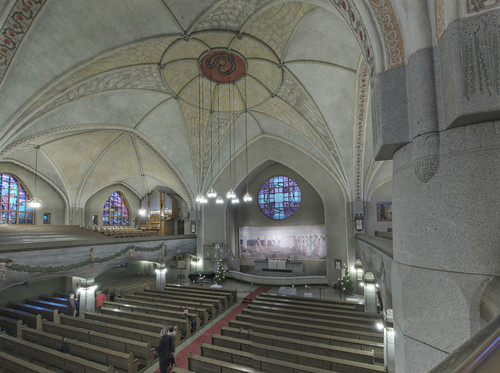Hi
Regarding technique, I was thinking more of doing the stitching. I've tried Photoshop (OK) and Hugin (trickier to use) and have just downloaded a trial version of PTGui to see if I think it's worth paying for.
I use PTGui, its simply fantastic, this for instance is 3 portrait orientations stitched
since its also HDRI it was from 12 exposures ... its HUGE in full size. It is also flawed, because I just rotated the camera on the tripod. Normally this works well, but not always, and as I don't have a shift lens right now ...
I suggest you try to mount the lens on the tripod and apply shift to the body this way you are 100% sure that perspective does not change.
the poor mans (and I'm not wealthy) way around this is mount the camera on a macro rail ($29) and wen you shift the lens, re-shift the camera to place the lens back where it was. If you do anything close up or have something like that pole in the image foreground you won't have funny converging lines like I got with those pews in the lower section of the image
Even with the 35mm it's definitely noticable -- three frames roughly double the horizontal angle of view of a single frame.
if you think about this all one can say is QED, however it is not the reason that shift lenses were made. You are employing it for stitching, which is essentially making your lens cover a larger sensor (using post processing not having a larger sensor). The perspective correction advantages of a 35mm lens (even on a "full frame") are minor and can easily be fixed in printing (tilting the enlarger) or in photoshop with invisible losses.
Heck I even corrected this one in PS
taken with my 9mm. It looked severe before I corrected it and even pixel peeping it its hard to see what's been lost by the algorithm.
have fun with that




